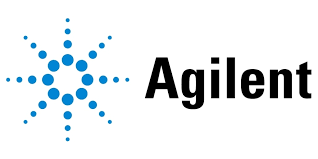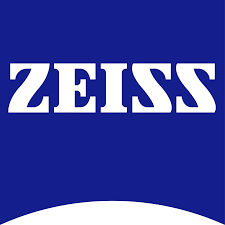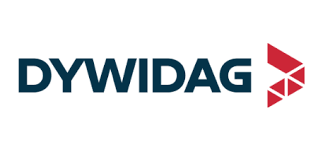Urban Air Mobility
Published Date: 17 December 2025 | Report Code: urban-air-mobility
Urban Air Mobility Market Size, Share, Industry Trends and Forecast to 2033
This report presents a comprehensive analysis of the Urban Air Mobility market, covering key market trends, technological advancements, regulatory frameworks, and growth drivers for the forecast period 2024 to 2033. It provides detailed insights, quantitative data, and strategic perspectives to help stakeholders understand and navigate the dynamic market landscape.
| Metric | Value |
|---|---|
| Study Period | 2024 - 2033 |
| 2024 Market Size | $8.30 Billion |
| CAGR (2024-2033) | 12.8% |
| 2033 Market Size | $25.74 Billion |
| Top Companies | Airbus Urban Mobility, Volocopter, Joby Aviation |
| Last Modified Date | 17 December 2025 |
Urban Air Mobility Market Overview
Customize Urban Air Mobility market research report
- ✔ Get in-depth analysis of Urban Air Mobility market size, growth, and forecasts.
- ✔ Understand Urban Air Mobility's regional dynamics and industry-specific trends.
- ✔ Identify potential applications, end-user demand, and growth segments in Urban Air Mobility
What is the Market Size & CAGR of Urban Air Mobility market in 2024?
Urban Air Mobility Industry Analysis
Urban Air Mobility Market Segmentation and Scope
Tell us your focus area and get a customized research report.
Urban Air Mobility Market Analysis Report by Region
Europe Urban Air Mobility:
Europe is witnessing steady growth in the Urban Air Mobility sector, with market figures rising from 2.51 in 2024 to 7.79 by 2033. The region’s progressive environmental policies, mature technological infrastructure, and strategic public-private partnerships are pivotal in driving market adoption and innovation in urban aerial transport.Asia Pacific Urban Air Mobility:
In Asia Pacific, the Urban Air Mobility market is set for rapid expansion with market values growing from 1.32 in 2024 to an estimated 4.09 by 2033. Increasing urbanization, strong governmental backing, and significant investments in smart city projects are key factors driving this growth, making the region a promising hub for innovative air mobility solutions.North America Urban Air Mobility:
North America stands as a leading market with values increasing from 3.23 in 2024 to 10.02 by 2033. The region benefits from advanced technological research, robust financial investments, comprehensive regulatory frameworks, and consumer readiness, all of which contribute to a thriving ecosystem for urban air mobility innovations.South America Urban Air Mobility:
South America presents a growing market for Urban Air Mobility, with projections rising from 0.75 in 2024 to 2.33 by 2033. Although the region faces infrastructural challenges, emerging economic opportunities, and supportive policies in select countries are fostering an environment ripe for the gradual adoption of aerial transport solutions.Middle East & Africa Urban Air Mobility:
In the Middle East and Africa, the market is expected to expand from 0.49 in 2024 to 1.51 by 2033. Although currently smaller in scale, ongoing investments in infrastructure, coupled with initiatives aimed at modernizing transportation networks, are laying the groundwork for significant growth in urban air mobility across these regions.Tell us your focus area and get a customized research report.
Urban Air Mobility Market Analysis By Vehicle Type
Global Urban Air Mobility Market, By Vehicle Type Market Analysis (2024 - 2033)
The vehicle type segment is critical, encompassing various modes such as electric vertical takeoff and landing (eVTOL) vehicles and drone taxis. The segment analysis focuses on the performance efficiencies achieved by electric propulsion systems, which are projected to grow substantially from 5.03 in 2024 to 15.62 by 2033. These innovations are driving largely improved safety metrics, reduced operational costs, and enhanced passenger experiences, thereby reinforcing their importance in the industry’s future.
Urban Air Mobility Market Analysis By Application
Global Urban Air Mobility Market, By Application Market Analysis (2024 - 2033)
Application segmentation in the Urban Air Mobility market covers diverse areas including passenger transport, freight and logistics, medical transport, and tourism and leisure. Passenger transport leads with significant market shares, driven by the demand for fast, point-to-point aerial mobility. Freight and logistics are gaining momentum as urban centers seek to optimize supply chains, while medical transport and tourism cater to specialized needs. This segmentation highlights the tailored approaches required to meet varied consumer demands and operational challenges.
Urban Air Mobility Market Analysis By Technology
Global Urban Air Mobility Market, By Technology Market Analysis (2024 - 2033)
Technological advancements are at the heart of urban air mobility, with innovation in autonomous systems and communication networks driving operational efficiencies. The autonomous systems segment, with a projected growth from 2.00 in 2024 to 6.19 by 2033, exemplifies the shift towards self-operating vehicles and automated traffic management. Similarly, advancements in communication systems ensure seamless connectivity between vehicles and control centers, enhancing safety and reliability across the network.
Urban Air Mobility Market Analysis By Infrastructure
Global Urban Air Mobility Market, By Infrastructure Market Analysis (2024 - 2033)
Infrastructure development is vital for the successful deployment of urban air mobility solutions. Investments in vertiports, which are expected to grow from 6.96 in 2024 to 21.59 by 2033, and ground support equipment facilitate efficient takeoff, landing, and maintenance operations. This segment underscores the need for state-of-the-art facilities and integrated logistics support, which together form the backbone of a scalable urban air mobility ecosystem.
Urban Air Mobility Market Analysis By Regulatory Framework
Global Urban Air Mobility Market, By Regulatory Framework Market Analysis (2024 - 2033)
Regulatory frameworks play a decisive role in shaping the urban air mobility market. Analysis of national regulations and international standards reveals consistent growth, with data indicating expansions from 6.96 to 21.59 in national regulatory support and from 1.34 to 4.15 in international guidelines. These frameworks provide the necessary safety, compliance, and operational protocols that facilitate market entry and long-term sustainability for industry players.
Urban Air Mobility Market Trends and Future Forecast
Tell us your focus area and get a customized research report.
Global Market Leaders and Top Companies in Urban Air Mobility Industry
Airbus Urban Mobility:
Airbus is pioneering innovative air mobility solutions with a focus on sustainable and efficient urban travel, incorporating advanced eVTOL technologies and integrated digital platforms.Volocopter:
Volocopter is a trailblazer in the aerial mobility market, known for its cutting-edge electric helicopter designs and its commitment to building safe, reliable urban air taxi services.Joby Aviation:
Joby Aviation is at the forefront of electric aviation, developing state-of-the-art VTOL aircraft that promise to revolutionize urban transportation by offering eco-friendly and efficient travel alternatives.We're grateful to work with incredible clients.









FAQs
What is the market size of Urban Air Mobility?
The Urban Air Mobility market is projected to reach $8.3 billion by 2033, with a compound annual growth rate (CAGR) of 12.8%. This growth indicates significant expansion driven by technological advancements and increased urbanization.
What are the key market players or companies in the Urban Air Mobility industry?
Major players in the Urban Air Mobility sector include companies engaged in electric vertical takeoff and landing (eVTOL) technology, drone manufacturing, aeronautics engineering, and urban transportation solutions. Key firms drive innovation and regulatory discussions.
What are the primary factors driving the growth in the Urban Air Mobility industry?
Growth in the Urban Air Mobility industry is driven by technological advancements in eVTOL aircraft, increasing urban congestion, demand for efficient transportation, and regulatory support for aerial mobility solutions. Environmental concerns further boost market potential through sustainable transportation solutions.
Which region is the fastest Growing in the Urban Air Mobility?
North America is projected to be the fastest-growing region in the Urban Air Mobility market, with a market size increasing from $3.23 billion in 2024 to $10.02 billion by 2033. Europe and Asia Pacific also show significant growth potential.
Does ConsaInsights provide customized market report data for the Urban Air Mobility industry?
Yes, ConsaInsights offers customized market reports tailored for the Urban Air Mobility industry. Clients can receive specific insights, segmentations, and forecasts based on unique business requirements and strategic goals.
What deliverables can I expect from this Urban Air Mobility market research project?
Deliverables from the Urban Air Mobility market research include comprehensive reports, detailed analyses of key segments, regional data, competitive landscapes, growth forecasts, and actionable insights to support decision-making and strategic planning.
What are the market trends of Urban Air Mobility?
Current Urban Air Mobility trends include an emphasis on electric propulsion technologies, increasing investment in infrastructure such as vertiports, and the growing demand for autonomous systems, shaping the future of urban transportation.

